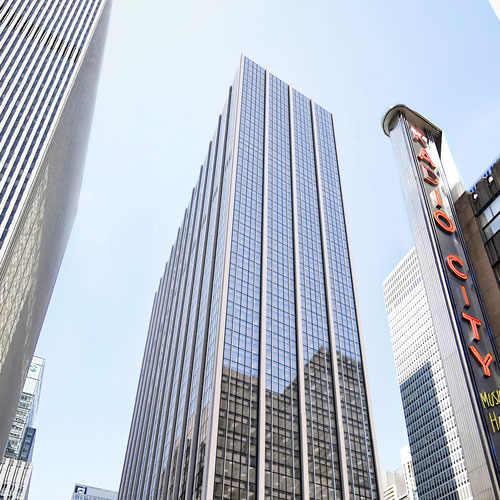Touring The Browning School for the first time, Kenny Marshall was reminded of the apartment buildings of his childhood.
“It was that old New York City feel,” he says. “Old plaster in the hallways, metal stairs . . . that old black and white paint, high gloss.”
He had arrived at a genuine New York institution. The Browning School has educated boys from kindergarten through 12th grade since 1888, and the two stone buildings it operates on the Upper East Side of Manhattan were built in 1911 and 1922, respectively. Stephen Clement, the school’s longtime headmaster, and John Campbell, CFO, wanted to end Clement’s tenure on a high note by bringing the interiors of the school’s buildings up to 21st century standards. As the new director of facilities and security, it would be Marshall’s job to complete that upgrade.
Marshall had overseen school renovations before, so he already knew the rhythm of the work. Major projects are compressed into the summer months while students are away; smaller upgrades can be undertaken during the school year, as long as the learning experience isn’t interrupted. Marshall enjoyed the “intrigue” of it all and the constant stream of new problems to solve.


Nevertheless, he had never faced a challenge like The Browning School’s renovation. The architectural plan by Peter Gisolfi Associates called for replacement of plumbing, electrical systems, HVAC, walls, ceilings, floors, and stairs across two buildings, eleven stories, and 50,000 square feet. The project was so intricate that it had to be split into five phases—with each phase scheduled to be accomplished over the course of five summers. The first two phases, involving upgrades to the gym and cafeteria, had already been completed in 2011 and 2012.
Marshall came aboard towards the end of the third phase, which entailed improvements to the library and technology lab and the construction of an elevator shaft. The work had to conclude by the second week of September, when school resumed. His first day was August 6, 2013.
The school administration had warned him the job would be daunting, but he says he was still “surprised and shocked” during that first tour to see how much work still had to be done.
“I didn’t see how they were going to finish,” he recalls.
Before tackling the particulars of the third phase, Marshall stepped back to evaluate the situation and its place within the larger five-year plan. “Going into a new building, first I had to acclimate myself with what we had,” he says. Next, introductions were in order: he met with his counterparts at JRM Construction Management, the project CM, and Sterling Project Development, the owner’s representative, to prepare for a long and close collaboration.
After that, Marshall needed to rally his new staff for the end of the phase.
“I had to make known what my goal was: to make sure everything was finished and the school was ready to open on the right day,” he says, and credits his “New York accent” and “New York attitude” in helping to win his crew’s trust. By working night shifts and on Sundays, the crew managed to complete the third phase on time.
When the school year brought a pause to construction, Marshall took advantage of the extra time to get to know his buildings.
“When you get into a new place, you really have to familiarize yourself with the actual layout,” he explains.
His new familiarity paid off during the next phases, which placed an elevator, a stairwell, and five Airstack chillers into two extremely narrow recesses behind one of the buildings. Marshall also had to supervise the installation of a new building-management system and the construction of a new lobby, while simultaneously dealing with HVAC complications and multiple floors that required both gutting and reconstruction.
Even after classroom renewal was finished, his job wasn’t quite complete. The rooms were to be graced with 12-foot Smart Boards—high-tech displays so massive they had to be craned into place.
Through every project, Marshall constantly drew on his own experience. He was a steamfitter before moving into property management, and both careers taught him to be present for every step of the construction process.
“If you’re the person who is going to be running the building, and you’re not actually there during installation, you’re never going to see where all your valves are,” he says. “It’s about walking the job every day. I was here every day. If I want to be here, if I’m going to be comfortable in this building, if I want this building to run as efficiently as possible, I have to be here to make sure and watch where all the duct work is, where every sensor is.”
The Browning School renovation project came to a successful conclusion in September 2015.
“The transition is amazing,” Marshall says. “I have people who come in now and can’t even imagine it’s the same school.” The bare plaster walls and the old glossy paint are gone, replaced with elegant wainscoting and tile.
The school’s major renovations may be over, but Marshall is already planning for the next few summers. He has his eye on some windows that need replacing, and he’s contemplating some work on the front walk.
“When you have that little space of time, you’re always trying to do work,” he says. “You’re always trying to turn something around.”
OPPORTUNITY KNOCKS: BENEFITS OF A MAJOR RENOVATION
Renovating the Browning School’s two adjoining buildings simultaneously led to unexpected opportunities:
- When renovation closed the connection between buildings, cutting an egress in the cafeteria wall permitted students a new access point.
- The Browning School shares one building with a condominium association, which wanted input on construction, so shifting school utility systems to the other building simplified negotiations.
- One building was converted from a city steam hookup to hot water heat before it was ready to accept a hot water boiler. The other remained on steam heat, but the construction schedule called for removal of its steam boilers. The solution to the heating dilemma? Route city steam from the first building to the second, and pipe hot water from a boiler in the second back to the first.

The Browning School’s new cafeteria space, which uses new overhead lighting sources, opened to students in May 2013. (Photo Courtesy of The Browning School)



